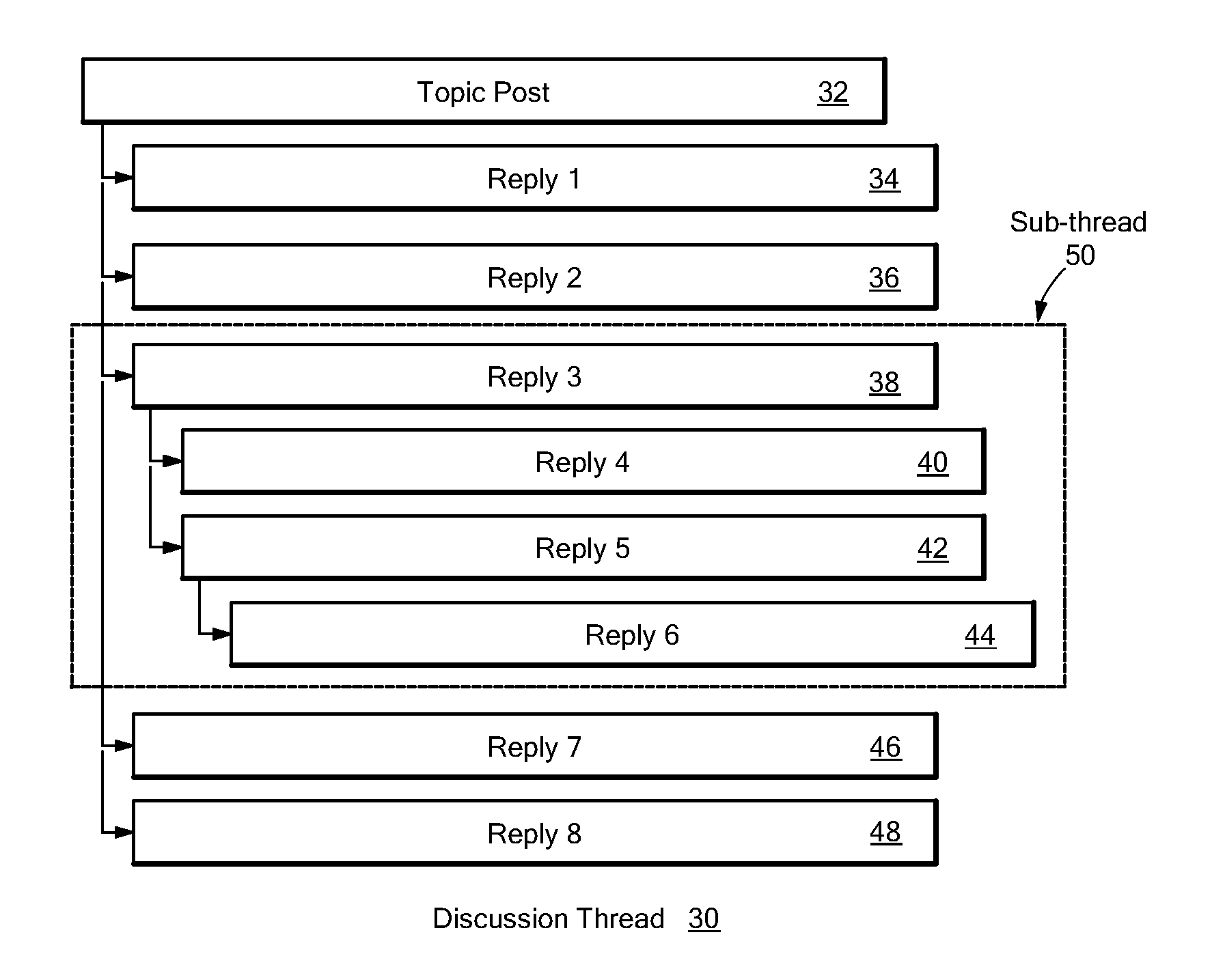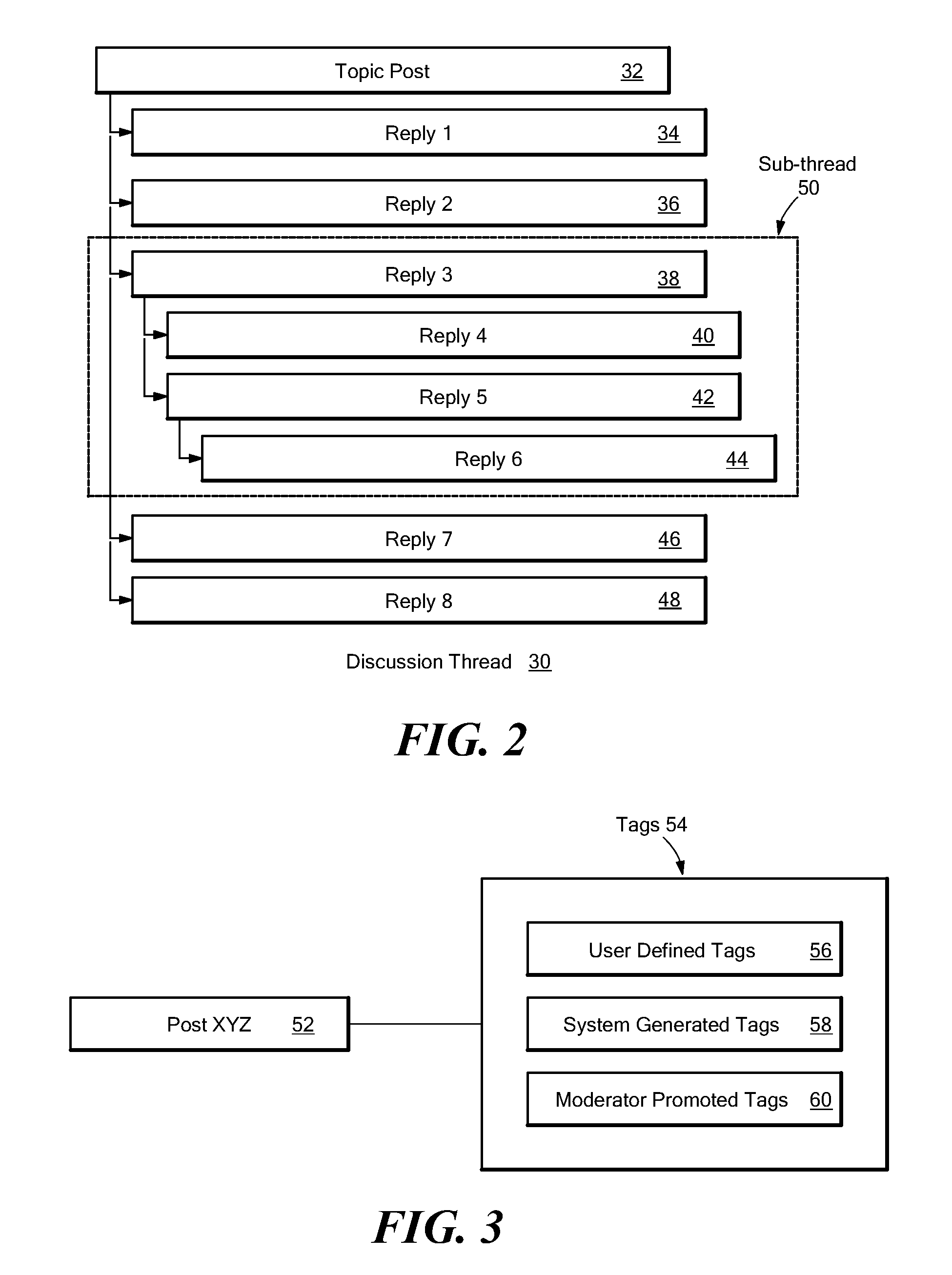Advanced discussion thread management using a tag-based categorization system
a discussion thread and advanced technology, applied in the field of advanced discussion thread management using a tag-based categorization system, can solve the problems of difficult to quickly read through the thread without prior knowledge of the overall context, the current solution is too limited in its operation, and the discussion threads tend to become voluminous, so as to improve the overall tag accuracy, efficiently provide tag coverage, and dramatically reduce subject clutter
- Summary
- Abstract
- Description
- Claims
- Application Information
AI Technical Summary
Benefits of technology
Problems solved by technology
Method used
Image
Examples
Embodiment Construction
[0026]As shown in FIG. 1, components in which an illustrative embodiment of the disclosed system operates include a server system 10 that is communicably connected to a communication network 12, which in turn is communicably connected to a number of client systems 14. The client systems 14 are shown for purposes of illustration as client systems 14a, 14b, 14c, etc. Each of the client systems 14 includes client software, shown as client software 16a, 16b, and 16c, each of which respectively generates a graphical user interface, shown as user interfaces 18a, 18b, and 18c. Each of the client systems 14 is associated with a user, for example users 20a, 20b and 20c.
[0027]The server system(s) 10 is shown including discussion forum server software 22, which provides a number of discussion threads 24, shown for purposes of illustration as including discussion threads 24a, 24b, 24c, etc., to users of the client systems 14 over the communication network 12.
[0028]The client systems 14 and ser...
PUM
 Login to View More
Login to View More Abstract
Description
Claims
Application Information
 Login to View More
Login to View More - R&D
- Intellectual Property
- Life Sciences
- Materials
- Tech Scout
- Unparalleled Data Quality
- Higher Quality Content
- 60% Fewer Hallucinations
Browse by: Latest US Patents, China's latest patents, Technical Efficacy Thesaurus, Application Domain, Technology Topic, Popular Technical Reports.
© 2025 PatSnap. All rights reserved.Legal|Privacy policy|Modern Slavery Act Transparency Statement|Sitemap|About US| Contact US: help@patsnap.com



